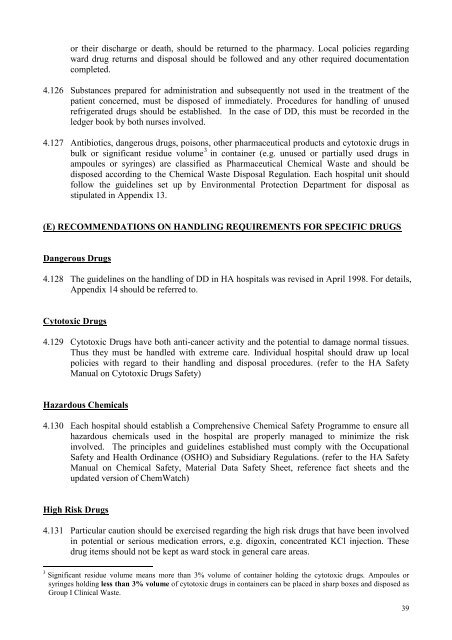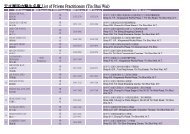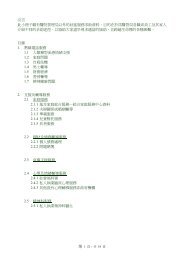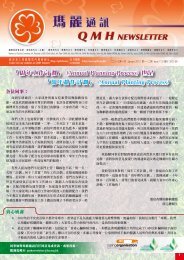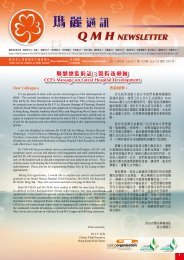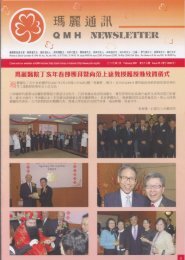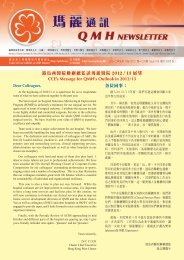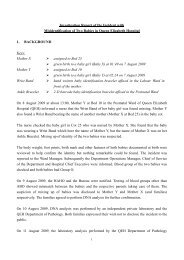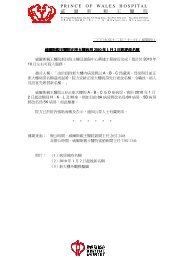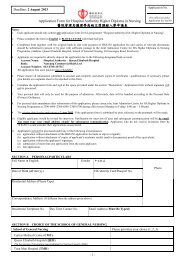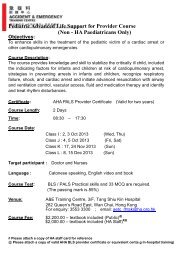2005 Edition Report on Drug Administration Procedure & Practices ...
2005 Edition Report on Drug Administration Procedure & Practices ...
2005 Edition Report on Drug Administration Procedure & Practices ...
You also want an ePaper? Increase the reach of your titles
YUMPU automatically turns print PDFs into web optimized ePapers that Google loves.
or their discharge or death, should be returned to the pharmacy. Local policies regardingward drug returns and disposal should be followed and any other required documentati<strong>on</strong>completed.4.126 Substances prepared for administrati<strong>on</strong> and subsequently not used in the treatment of thepatient c<strong>on</strong>cerned, must be disposed of immediately. <strong>Procedure</strong>s for handling of unusedrefrigerated drugs should be established. In the case of DD, this must be recorded in theledger book by both nurses involved.4.127 Antibiotics, dangerous drugs, pois<strong>on</strong>s, other pharmaceutical products and cytotoxic drugs inbulk or significant residue volume 3 in c<strong>on</strong>tainer (e.g. unused or partially used drugs inampoules or syringes) are classified as Pharmaceutical Chemical Waste and should bedisposed according to the Chemical Waste Disposal Regulati<strong>on</strong>. Each hospital unit shouldfollow the guidelines set up by Envir<strong>on</strong>mental Protecti<strong>on</strong> Department for disposal asstipulated in Appendix 13.(E) RECOMMENDATIONS ON HANDLING REQUIREMENTS FOR SPECIFIC DRUGSDangerous <strong>Drug</strong>s4.128 The guidelines <strong>on</strong> the handling of DD in HA hospitals was revised in April 1998. For details,Appendix 14 should be referred to.Cytotoxic <strong>Drug</strong>s4.129 Cytotoxic <strong>Drug</strong>s have both anti-cancer activity and the potential to damage normal tissues.Thus they must be handled with extreme care. Individual hospital should draw up localpolicies with regard to their handling and disposal procedures. (refer to the HA SafetyManual <strong>on</strong> Cytotoxic <strong>Drug</strong>s Safety)Hazardous Chemicals4.130 Each hospital should establish a Comprehensive Chemical Safety Programme to ensure allhazardous chemicals used in the hospital are properly managed to minimize the riskinvolved. The principles and guidelines established must comply with the Occupati<strong>on</strong>alSafety and Health Ordinance (OSHO) and Subsidiary Regulati<strong>on</strong>s. (refer to the HA SafetyManual <strong>on</strong> Chemical Safety, Material Data Safety Sheet, reference fact sheets and theupdated versi<strong>on</strong> of ChemWatch)High Risk <strong>Drug</strong>s4.131 Particular cauti<strong>on</strong> should be exercised regarding the high risk drugs that have been involvedin potential or serious medicati<strong>on</strong> errors, e.g. digoxin, c<strong>on</strong>centrated KCl injecti<strong>on</strong>. Thesedrug items should not be kept as ward stock in general care areas.3 Significant residue volume means more than 3% volume of c<strong>on</strong>tainer holding the cytotoxic drugs. Ampoules orsyringes holding less than 3% volume of cytotoxic drugs in c<strong>on</strong>tainers can be placed in sharp boxes and disposed asGroup I Clinical Waste.39


